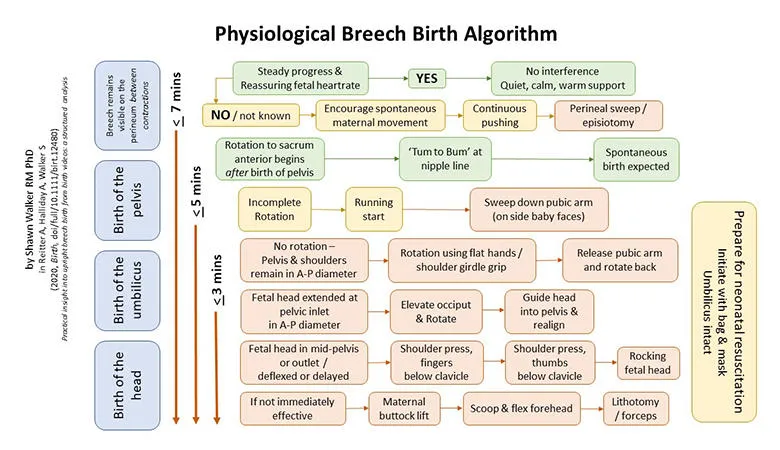I am incredibly grateful to the women, midwives and doctors who have shared their private and vulnerable experiences with us. The birth videos they have donated have enabled us to increase our understanding of safe parameters in vaginal breech birth and hopefully lead to increased safety.
Dr Shawn Walker, Lecturer and Breech Specialist Midwife
02 March 2020
New algorithm to increase breech birth safety
Designed to help practitioners deliver breech babies more safely and offer more choice to women.

Researchers in the Faculty have published an algorithm for health professionals designed to increase safety in breech birth delivery. The algorithm will be used in specialist training for midwives and obstetricians and offers more options for women facing a high-risk birth.
In UK, around 1 in 200 births are breech, which is when a baby is born bottom first instead of head-first. Between 20-30% of breech births aren’t diagnosed until the late stages of labour. Most babies in the breech position are delivered via caesarean section, as the risk of a poor short-term outcome are higher with vaginal birth. However, caesarean sections can sometimes lead to difficulties for future births. Making physiological breech births safer increases the choices available to women who have a breech baby at term.
During a breech birth, a large amount of the risk is due to delay in the final moments, where decisions need to be made and implemented quickly. Whilst there has been much debate amongst health professionals over how and when intervention should occur, little evidence exists to help decision making around the final moments of birth.
By analysing existing video footage of successful breech births, researchers created an algorithm which predicts the timings and interventions needed to deliver a breech baby safely, which occurs within a timeframe of under seven minutes.

The study found that most upright breech births occur within three minutes of the birth of the foetal pelvis, a significantly shorter interval than was previously thought ‘normal’ for vaginal breech births. By identifying the common characteristics and calculating a timekeeping framework for when interventions should be used, the team developed the physiological breech algorithm which can be used across teaching, research and practice. The algorithm is already part of mandatory training for healthcare teams in some hospitals within the UK, Europe and North America.
The structured analysis of video used for the study is a new methodology for this area of midwifery research. And the paper is the first to report timings and variations in the position of a baby during the final moments of upright breech birth – where the mother isn’t lying down. Using video allowed researchers to study each of the births in detail and identify common characteristics that feature in successful breech births. This could not be achieved from analysing the medical notes recorded at each of the births.
Dr Shawn Walker, a lecturer at King’s and a practising Breech Specialist Midwife, led this study in collaboration with her obstetric colleague, Dr Anke Reitter of Frankfurt, Germany. Working in her team was Alexandra Halliday, an undergraduate midwifery student at King’s with an interest in midwifery research.
Dr Walker’s previous research into breech birth formulated standards for practitioners attending breech births as well as developing some of the manoeuvres which were used as interventions in the videos the team analysed. A case study of one of these, the face-to-pubes rotational manoeuvre for entrapped nuchal arms, is being published alongside the video study.
Dr Walker recently travelled to Canada as the Elaine Carty 2020 Visiting Scholar for the University of British Columbia. She delivered training in using the Physiological Breech Birth Algorithm to over 200 midwives, obstetricians and family physicians.
Dr Walker hopes to introduce the algorithm into more healthcare settings and embed into guidelines for safe breech births in the UK and abroad, giving health care professionals the confidence and the tools to intervene in a timely manner.
